Rock-forming minerals are minerals that are part of rocks as their permanent essential components. They differ from each other in their physical properties and chemical composition. In addition to rock-forming minerals, there are also minor ones. They occur as impurities and do not play such a large geological role.
Plagioclases
Plagioclases are the most common rock-forming minerals. They are a mixture of anorthite and albite. There are many varieties of plagioclase. With an increase in the proportion of anorthite, the basicity of the mineral increases.
Plagioclases are not resistant to chemical weathering, due to which they become clay compounds. In this feature, they are similar to feldspars. They can be used as a facing and decorative material. Almost every rock-forming mineral of the plagioclase group is found in the Urals or Ukraine.
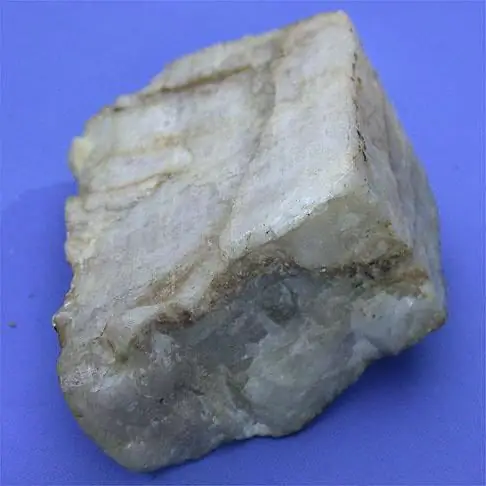
Nepheline
Nepheline belongs to the group of framework aluminosilicates. It is depleted in silica. Similar rock-forming minerals are part of igneous rocks, including nephelinites and nepheline syenites. Witheasily weathered from the earth's surface and transformed into kaolinite, as well as secondary formations of sulfate or carbonate composition.
Together with apatites, nepheline rocks can form vast massifs that are very important for modern industry. They are used in the production of glass, cement, alumina, silica gel, soda, ultramarine, etc. These main rock-forming minerals are found on the Kola Peninsula in the Murmansk region.
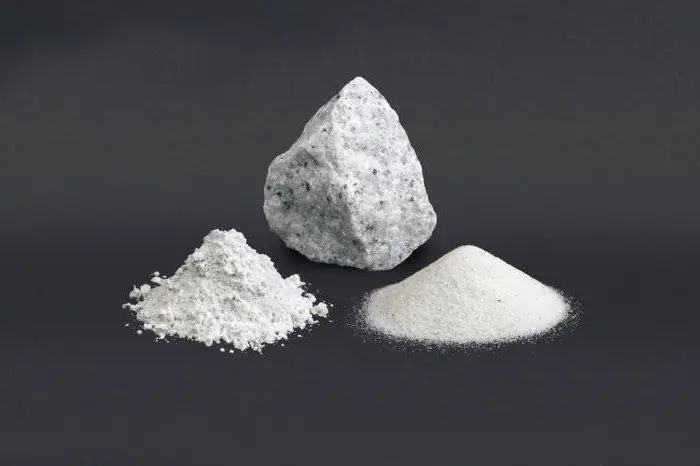
Amphiboles and pyroxenes
Amphibole, or ribbon silicates, includes hornblende, which is an important rock-forming component in metamorphic and igneous rocks. Its distinguishing features are high strength and high viscosity. Most often, hornblende is found in the Urals.
Augite is a rock-forming mineral of pyroxenes. It is the most important component of igneous rocks. The color of augite can be very different (from black to green). This rock-forming mineral from the pyroxene group is part of bas alt, andesite, diabase and some other rocks.
Mica
Some silicates have a layered, scaly or foliar structure. The most common such minerals are asbestos, talc, kaolinite, hydromicas, and micas (including muscovite and biotite).
What are their other features? Muscovite is a white mica found in metamorphic and igneous rocks. When weathered, it becomes a scattering. Muscovite is used aselectrical insulating material. It is also used in construction, where mica powder is a common powder. Muscovite is mined in Eastern Siberia, the Urals and Ukraine.
Similar rock-forming minerals - biotites. It is magnesian and ferruginous mica of brown or black color. It is characteristic of metamorphic and igneous rocks. Biotite forms granular and scaly accumulations. It is considered a chemically unstable mineral. Biotite is found in Transbaikalia and the Urals.
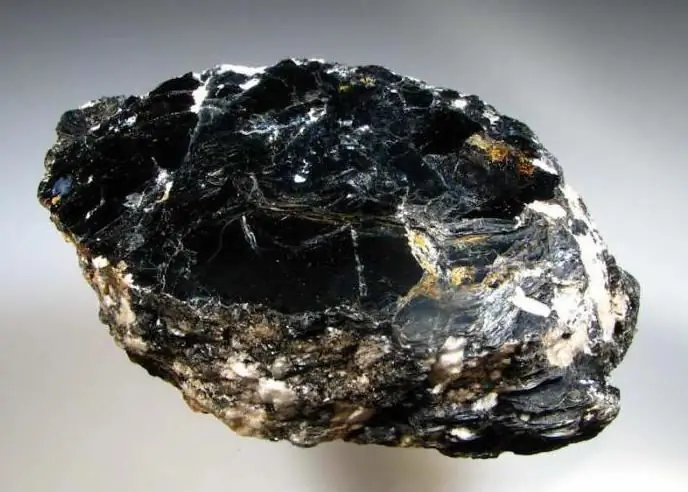
Hydromica
Another rock-forming minerals of rocks are hydromicas. Their characteristic feature is a small amount of cations. In addition, hydromicas differ from micas by a significantly higher content of water in their composition, which is reflected in their name. Their formation is facilitated by hydrothermal processes and weathering of rocks.
The most valuable hydromica is brown or golden vermiculite. When heated, the molecular water of this mineral forms steam, which expands the layers in the crystal lattices, which increases its volume and density. Vermiculite is valuable for its sound-absorbing and heat-insulating qualities.
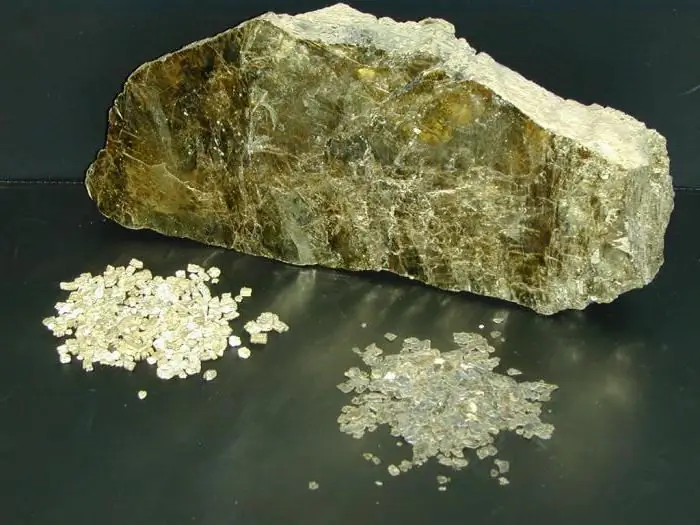
Layered silicates
Minerals asbestos, talc, montmorillonite and kaolinite belong to the group of layered silicates. What is their feature? The formation of talc occurs as a result of the interaction of hot solutions with aluminosilicates and magnesia silicates. Heused as a powder in the manufacture of plastics.
Like some other rock-forming minerals, asbestos is known as several of its varieties. It is a poor conductor of electricity and heat, and is alkali resistant and fire resistant. Chrysotile asbestos has the greatest value. It is formed from carbonate and olivine rocks. Asbestos in its long-fiber form is used in the manufacture of some automotive parts and fireproof fabrics.
Kaolinite is considered to be the most common clay mineral. It is formed as a result of weathering of micas and feldspars and is characterized by high stability. This mineral is white, grayish or brownish in color. Kaolin clays are used in the ceramic industry, where this raw material is used in the production of faience and porcelain ceramics. Due to the properties of their forming mineral, these materials are plastic.
Montmorillonite is unusual in many ways. Its chemical composition is variable and depends on the properties of the atmosphere, including the content of water in it. These main rock-forming minerals have a mobile crystal lattice, due to which they swell strongly when in contact with moisture.
Montmorillonite is formed in an alkaline environment due to the decomposition of tuffs and volcanic ash in water. It also appears in the weathering of igneous rocks and is resistant to chemical weathering. This mineral imparts additional adsorbability and swelling capacity to clayey rocks. Montmorillonite is used asemulsifier, filler and bleach. Its deposits are located in the Crimea, Transcarpathia and the Caucasus.
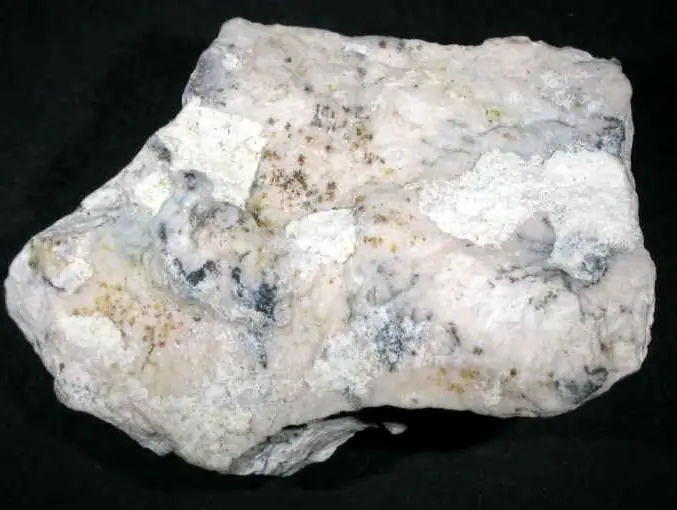
Quartz
Mineral oxides are compounds of metals and oxygen. The most common representative of this group is quartz. This mineral is formed as a result of magmatic processes occurring in the deep interior of the earth. It occurs in three variations: as cristobalite, tridymite and a-quartz. The last of these modifications is the best studied.
Quartz is included in the rock-forming minerals of igneous rocks (as well as sedimentary and metamorphic). It is chemically resistant. Quartz accumulates, forming thick sedimentary deposits, sands and sandstones. The mineral is used in the ceramic and glass industries. As a natural stone (sandstone and quartzite), it is popular as a structural and cladding building material. It is also used in the manufacture of chemical glassware, optical instruments, etc.
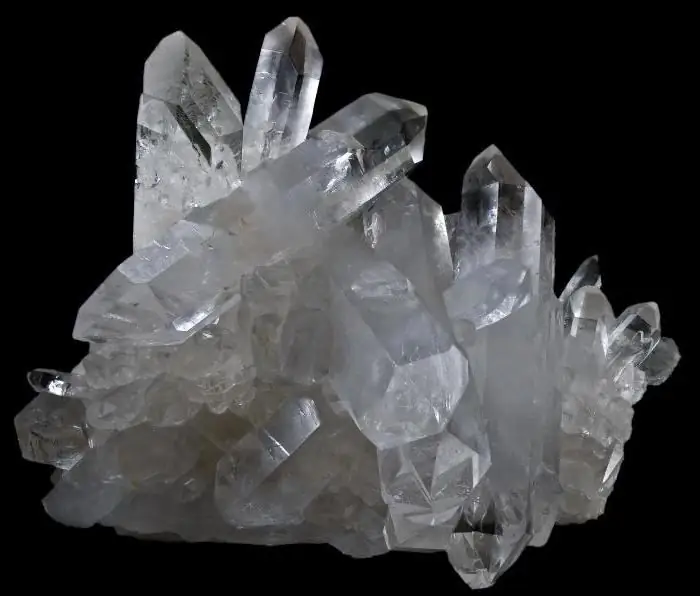
Carbonates
Another group of rock-forming minerals is carbonates. They are widely distributed s alts of carbonic acid. Carbonates are characteristic of metamorphic and sedimentary rocks. The most common types are magnesite, calcite and sodium. They all have their own individual properties.
Calcite is characterized by low solubility in water. When exposed to carbon dioxide, it can turn into bicarbonate. This product will dissolve in water hundreds of times faster thancommon calcite. This mineral is found in crystalline aggregates, incrustations and thick deposits of marble and limestone. Calcite can form as a result of the accumulation of silt. Another reason for its occurrence is the deposition of carbonic lime in the water. Deposits are found in the Urals, Ukraine and Kaleria.
Magnesite is similar to calcite in shape and structure, but is much less common in nature. The reason is in the factors of its formation. Magnesite is formed as a result of weathering of serpentinites, as well as the interaction of magnesian solutions and limestones.
Natrite is a white or colorless mineral found in the form of granular and dense masses. When heated, it dissolves. Natrite is formed in sodium s alt lakes in the case of an excess of dissolved carbon dioxide in them. This mineral is used in metallurgy and in the manufacture of glass.
Opal
Opal is a widespread amorphous hydrated silica. It does not decompose in acids, but is soluble in alkalis. There are several conditions for its formation. This mineral appears as a result of precipitation from geysers and hot solutions, as well as the weathering of igneous rocks. In addition, it is formed due to the accumulation of waste products of organisms living in the sea. Opals are a popular material for jewelers.

Sulfates and sulfides
Mineral sulfates are s alts of sulfuric acid formed on the earth's surface. Most compounds of this group are not stable enough in the bark.planets. Sulfates such as gypsum, mirabilite and barite are used for building purposes. Anhydrite is a continuous granular mass. It is a crystalline mineral with a characteristic whitish-blue color.
When in contact with water, anhydrite expands and becomes gypsum, which forms impressive accumulations of rocks. This sulfate is a typical chemical precipitate formed when the seas dry up. Gypsum and anhydrite are used as binders.
Heavy spar or barite is a crystal with a specific tabular shape. It does not transmit X-rays well, which is why it is used in the production of special concrete. Barite is formed as a result of precipitation from hot water solutions.
Sulfides are compounds of sulfur with other elements. Cinnabar belongs to this class. This mineral is associated with young volcanoes. In nature, cinnabar is found in the form of veins and reservoir deposits. It accumulates in the form of placers due to its own stability on the earth's surface. Cinnabar is used in the synthesis of mercury and the manufacture of paints.






